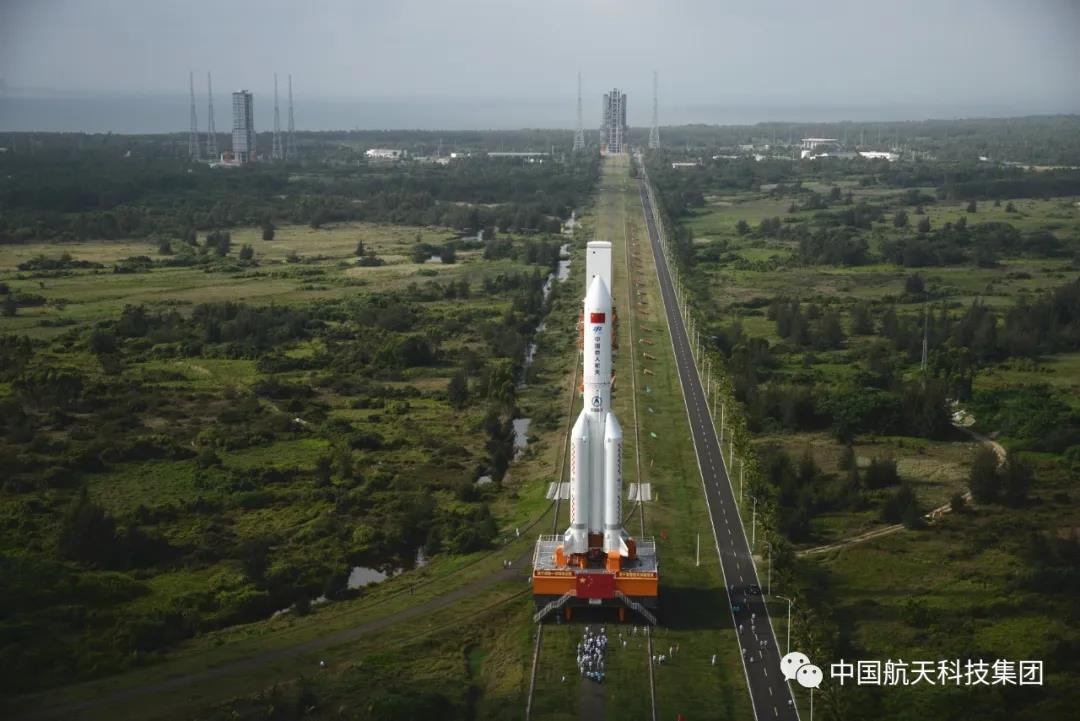bottom
|
Shanghai Academy of Spaceflight Technology Powered by www.300.cn 沪ICP备15011809号 |
New Detail
“New launch vehicle” for “new spacecraft”! Long March-5B launch vehicle successfully launched an experimental spacecraft for the new generation of manned spacecraft
At 18:00, May 5, Long March-5B launch vehicle, the brother of “plump Long March 5” launch vehicle, successfully blasted off at Wenchang Space Launch Center of China and completed the magnificent maiden flight.
The experimental spacecraft for the new generation of manned spacecraft, weighing about 22 tons, is an experimental version of the “new launch vehicle” for Chinese astronauts, and it has smoothly entered into the predetermined orbit with other loads.
So far, the first two steps have been completed for the “three-step” strategy of China’s manned space program, namely, the manned spacecraft stage and the space laboratory stage. Now the third stage ofspace station construction has begun.
The Long March-5B launch vehicle, which is developed under the leadership of China Academy of Launch Launch vehicle Technology, is about 53.7 meters long and about 18 stories high, with a takeoff mass of about 849 tons and a low-earth orbit carrying capacity of 25 tons, able to launch about 22 tons of space station modules.

▲ Full view of Long March-5B launch vehicle (photographed by Su Dong)
The Long March-5 series of launch vehicles mainly include Long March-5 and Long March-5B launch vehicles, which are equally “plump”, with the diameter of core first stage being 5 meters, and are tied up with four boosters with a diameter of 3.35 meters. The most intuitive difference between the two lies in their height and configuration.
Compared with the Long March-5 launch vehicle, the Long March-5B launch vehicle is about 3 meters shorter because the second substage and the interstage segment are removed, and is the first “one-and-a-half stage” launch vehicle in China (the booster is also called “half stage”). However, the Long March-5B launch vehicle has a “big head” - the fairing is bigger than that of the Long March-5 launch vehicle. It is the largest fairing in China with a length of 20.5 meters and a diameter of 5.2 meters, which is newly developed according to the mission requirements of the space station. Because of such design, the launch vehicle can accommodate the huge core module of the space station.
The Long March-5 launch vehicle, which has one more stage, is good at “long-distance running” and can send “passengers” to the geosynchronous orbit 36000 kilometers away, to the moon 380000 kilometers away, or to Mars about tens of millions of kilometers away at least.
The Long March-5B launch vehicle, which has one stage removed, is a good “sprinter” and focuses on sending “passengers” to orbit about 200-400 kilometers near the Earth, which is the main battleground for the construction of China’s space station.

▲ Long March-5B launch vehicle in the factory (photographed by Su Dong)
This mission represents the launch of spacecraft weighing more than 20 tons for the first time in China and even in Asia.The success of the mission has further established the status of the Long March-5 series launch vehicles in the first echelon of active launch vehicles in the world in terms of carrying capacity, and indicates that China has officially opened up the 25-ton “space transport corridor” and has the ability to construct large space infrastructure such as manned space station. This is a critical step in China’s journey to build a space power.

▲ Transfer of Long March-5B launch vehicle (photographed by Su Dong)
In this mission, the launch vehicle core first stage with high-thrust hydrogen-oxygen engine directly sends the spacecraft into the predetermined orbit, marking that China has become one of the few countries which have mastered the technology of high-thrust direct precise orbit injection with “one-and-a-half-stage” launch vehicle.
The model team has also broken through a series of key technologies such as “zero window” launch of cryogenic launch vehicle and large diameter module-launch vehicle separation, which ensure the timely launch, safe separation and precise orbit injection of subsequent space station modules and lay a solid foundation for the development of larger launch vehicles.
▲ Panoramic records of the transfer of Long March-5B launch vehicle (photographed by Gao Yiming and Su Dong)
The new generation of manned spacecraft, as the name implies, is a fully upgraded launch vehicle for space transportation. In order to meet China’s mission requirements such as operation of near-earth space station, manned deep space exploration, the spacecraft adopts a two-module configuration including re-entry module and service module, which enable it to carry 6-7 astronauts at a time in a near earth orbit mission in the future.
The experimental spacecraft for the new generation of manned spacecraft is an experimental version of the new generation of manned spacecraft, which is developed under the leadership of China Academy of Space Technology. The height of the spacecraft is about 9 meters, the diameter of the thickest part is about 4.5 meters, and the weight is more than 20 tons.
The successful implementation of the flight test of the experimental spacecraft will lay a more solid foundation for China to develop a new generation of manned spacecraft to realize the development of manned space transportation technology from following to running together and leading and to build and operate manned space stations and carry out manned deep space exploration, thus opening up a new chapter in China’s manned space program.
This launch is the 331st flight of the Long March series of launch vehicles.
Shanghai Academy of Spaceflight Technology is responsible for the research and development of four boosters of the Long March-5B launch vehicle, as well as the batteries for external safety and core stage, which provide 90% take-off thrust. Meanwhile, it also undertakes the research and development of energy management system, solar panel, information management function measurement and control subsystem, etc. of the experimental spacecraft.
Source: WeChat Official Account of China Aerospace Science and Technology Corporation

